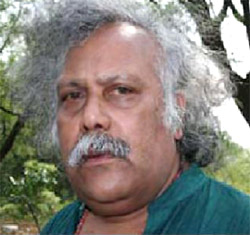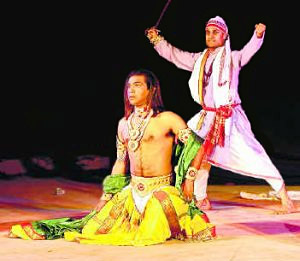 H. S. Shiva Prakash is a famous Kannada dramatist. He was also a prominent poet, translator, and also a critic. He was born in Bengaluru in 1954 in the Indian state of Karnataka. H. S. Shiva Prakash studied English literature and is a professor at the School of Arts and Aesthetics, Jawaharlal Nehru University, Delhi. H. S. Shiva Prakash belongs to the `total theatre` school of Kannada theatre, with music, dance, action, and a strong storyline. He draws subjects for his plays from the history and culture of Karnataka. One could describe his work as a search for the meaning and definition of culture, even for an alternate culture. Most of it deals with the Dravidian heritage and sets out to examine the present in the light of the past. Politically relevant, it is also artistically pleasing.
H. S. Shiva Prakash is a famous Kannada dramatist. He was also a prominent poet, translator, and also a critic. He was born in Bengaluru in 1954 in the Indian state of Karnataka. H. S. Shiva Prakash studied English literature and is a professor at the School of Arts and Aesthetics, Jawaharlal Nehru University, Delhi. H. S. Shiva Prakash belongs to the `total theatre` school of Kannada theatre, with music, dance, action, and a strong storyline. He draws subjects for his plays from the history and culture of Karnataka. One could describe his work as a search for the meaning and definition of culture, even for an alternate culture. Most of it deals with the Dravidian heritage and sets out to examine the present in the light of the past. Politically relevant, it is also artistically pleasing.
A scene from Mahachaitra by H. S. Shiva Prakash, Indian Theatre Personality, Out of his fourteen plays, Mahachaitra staged in 1985 and Manteswami Kathaprasanga or Manteswami`s Scripted Story` in 1989 are important. In the first he boldly reassesses the complexities of the twelfth-century Kannada Bhakti movement and the life of its leader, Basaveswara. It became highly controversial, as the religious establishment perceived it a threat. They think it misrepresented Basaveswara`s character. The text was withdrawn from university syllabi. Manteswami Kathaprasanga discusses the life and achievements of the folk saint belonging to the oppressed classes, and has seen more than 125 performances all over India.
 Major Works of H. S. Shiva Prakash
Major Works of H. S. Shiva Prakash
Poetry
* Milarepa
* Malebidda Neladalli
* Anukshana Charite
* Suryajala
* Maleye Mantapa
* Matte Matte
* Mabbina Haage Kanive Haasi
* Maruroopagalu (Kannada translation of poems from various languages)
* Nanna Mainagara (Kannada translation of the Malayalam poems of K. Satchidanandan)
* Navilu Nagara (songs from his plays)
Plays
* Mahachaitra
* Sultan Tipu
* Shakespeare Swapnanauke
* Manteswamy Kathaprasanga
* Madari Madayya
* Madurekanda
* Madhavi
* Matrika
* Makarachandra
* Sati
* Cassandra
* Maduve Hennu
* King Lear (Kannada translation of Shakespeare`s play)
* Maranayakana Drishtanta (Kannada adaptation of Macbeth)
* Mallammana Mane Hotlu (Kannada adaptation of Federico Garcia Lorca`s The Shoemaker`s Prodigious Wife)
Others
* Sahitya mattu Rangabhoomi (a treatise on literature and theatre)
* Modala Kattina Gadya (a collection of essays)
* Yuganta (Kannada translation of Irawati Karve`s book of the same name)
* Batteesa Raaga (Spiritual autobiography)
* Incredible India: Traditional Theatres
Awards and Honours of H. S. Shiva Prakash
* Four Kannada Sahitya Akademi awards
* Sangeet Natak Akademi award for 1997
* Satyakama award for 2003
* Ministry of Human Resource Development fellowship for Kannada literature
* Honorary Fellow of the School of Letters, University of Iowa, since 2000
* Karnataka Rajyotsava Prashasti, 2006




















